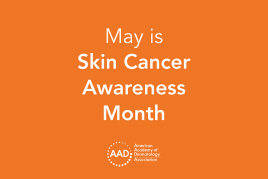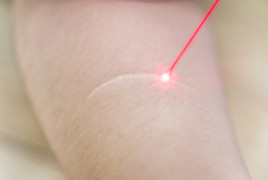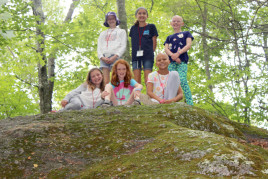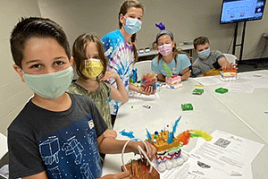Hair care: Lice (ages 11 - 13)
Good Skin Knowledge lesson plan
Time: 35 min
Objective
Students will be able to:
State that being “dirty” is not why people get lice
Learn what can be used to treat lice
Define what a “nit” is
Materials
Pencils
Item to pass around for Hot Potato game like ball, crumpled ball of paper, marker, etc.
Assessment
During Introduction to New Material, assess students’ prior knowledge on this topic when tallying their votes on the True or False questions.
At the end of the Introduction to New Material, assess students’ understanding of material by the students’ answers to the review questions.
During the Guided Practice, evaluate students’ answers to questions asked during the game to check for understanding.
During Closing, assess whether students have grasped main points of the lesson by asking quick True or False review questions.
Opening
3 minutes
Ask students if they like bugs.
After students respond, ask if they would like having bugs in their hair.
After students respond, ask if they know of any bugs that specifically like hair. They may have gotten this before or been checked for it in school. If students do not know, reveal you are talking about lice.
Ask students if they know anything about lice, or know anyone who has ever had lice. If students respond, ask follow up questions such as:
How did they treat the lice?
Why do you think that’s so?
Do you know how the person got it?
If students are unresponsive, explain that it is okay if they do not know much about lice because today they are going to learn all about it.
Introduction to new material
15 minutes
Materials:
Pass out Lice True or False handout and pencils.
Explain students will have 5 minutes to fill it out. Give more time if needed.
After time is up, go over each question. Take a vote on those who think it’s “True” and those who think it’s “False,” but does not go over the answers until the group takes a vote on every question.
After votes are all done, reveal answers and explanations. Facilitator should use Lice True or False Answer Key for this part.
Check for questions during and after the True or False review. Then ask a few basic questions:
What is the singular form of “lice”?
Can clean people get lice?
What is a nit?
Guided practice
10-15 minutes
Materials:
Item to pass around for Hot Potato game like ball, crumpled ball of paper, marker, etc.
Tell students to put away their sheets so they are out of sight.
Say they are going to play a quick game.
Tell students to stand up and get in a circle (or put chairs in a circle, whatever is most convenient).
Explain they will be playing Hot Potato. Each person will pass the object around in the circle. When you say, “Stop,” the person holding the item will have to answer the question about lice. If the answer is wrong, the person has to sit down. Make sure that the students who are “out” remain involved by having them read out a question with him/her, (or have them seated near so they can still listen and participate.)
Closing
2 minutes
Ask students “True or False” questions:
True or False? Dirty AND clean people can get lice. (True)
True or False? A louse egg is called a nit. (True)
True or False? Lice can fly into your head? (False: They crawl)
True or False? Getting lice is common. (True)
 Think sun protection during Skin Cancer Awareness Month
Think sun protection during Skin Cancer Awareness Month
 How to care for your skin if you have lupus
How to care for your skin if you have lupus
 Practice Safe Sun
Practice Safe Sun
 Sunscreen FAQs
Sunscreen FAQs
 Fade dark spots
Fade dark spots
 Hidradenitis suppurativa
Hidradenitis suppurativa
 Laser hair removal
Laser hair removal
 Scar treatment
Scar treatment
 Botox
Botox
 Kids' camp - Camp Discovery
Kids' camp - Camp Discovery
 Dermatologist-approved lesson plans, activities you can use
Dermatologist-approved lesson plans, activities you can use
 Find a Dermatologist
Find a Dermatologist
 Why choose a board-certified dermatologist?
Why choose a board-certified dermatologist?